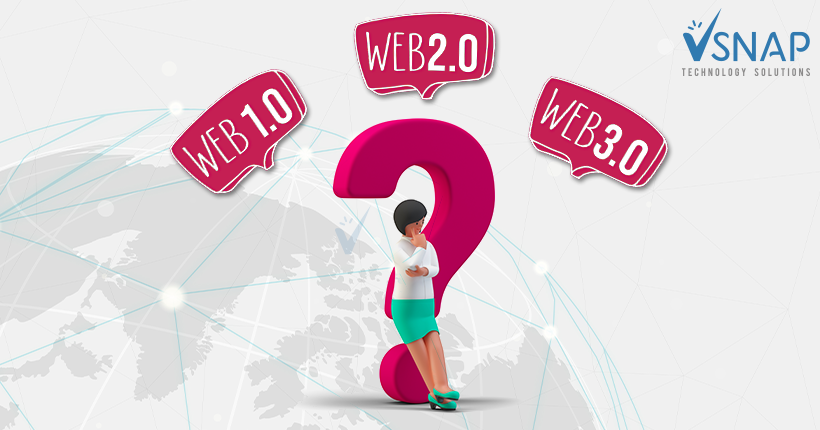NFTs, Virtual Reality, and Metaverse are all the rage now but for the uninitiated, Web 3.0 isn’t just that alone, but a collection of unbelievable technologies that span beyond our current possibilities.
But before that, let’s just explore
What’s the Difference between Web 1.0, Web 2.0, and Web 3.0?
Are they the same thing or different things entirely? This is a question that many people have asked themselves when it comes to web design. Well, we’re here to clear everything up for you! In this article, we will discuss all three of these terms and how they differ from one another in order to help you get a better understanding of each term.
Websites have really come a long way from just being plain pages full of hyperlinks into portals of perfection with unbelievable UI/UX features. As time has passed, so too have the different versions of “the web” come about.
Web 0.0
Yes, of course, there was Web 0 too, duh…
The first website ever created was made in 1990 by Tim Berners-Lee while he was working at CERN. This website consisted of only a few pages and hyperlinks. Back then, there wasn’t really anything like it out there, and it changed the way we interact with information online forever. Web 0.91 Also known as the Mosaic Browser, this was released in 1993 and allowed for users to view images on websites which made them look a lot more appealing than they did before. It also introduced us to the world of HTML (HyperText Markup Language).
Web 1.0
In 1995, Netscape released the first commercial browser(yeah, remember Netscape Navigator? Good ol times, right), and with it, Web 1.0 was born.
This version of the web is known for its primitive design and lack of features when compared to later versions. However, this is where we started to see websites being used as more than just information portals – they began to be used for eCommerce transactions, online banking, and more.
Web 2.0
The term “Web II” was coined in 1999 by Darcy DiNucci, an information architect. This version of the web brought about a huge change in how users interact with websites. Rather than static pages like in Web I, users could now create their own content on websites (think blogs, wikis, social media).
This made the web feel a lot more personal and gave users a more interactive experience. Additionally, it allowed businesses to connect with their customers in new and innovative ways. Basically, Web 2.0 is the current phase of evolution, and this is where We, the global populace, have now turned into a single microcosm or a community that has become informed and self-aware. ( Unfortunately not intelligent, including the author!). Web 2.0 is where everyone got a voice. But all our voices and expressions are still under the platforms owned by the tech giants and corporates, which means that everyone is basically under review.
Web 3.0
The next phase of the web is still currently unfolding, so it’s hard to say exactly what it will entail.
But as we have mentioned above, these platforms will be radically transformed into spheres of the personal net. Yes, you heard it right! We all will be islands of vast connections, and the internet will be a personalized asset thanks to the awesome evolution and capability of blockchain technology.
A world where the individual is empowered rather than the organizations. But it’s still too far to come to a conclusion, though.
However, many believe that Web 3.0 will be all about the internet of things – an interconnected world where everything is connected to the internet.
This means that we will be able to control our devices and appliances through voice commands, sensors, and other methods. We’re really excited to see where this version of the web takes us! So there you have it – a brief overview of each version of “the web.”



